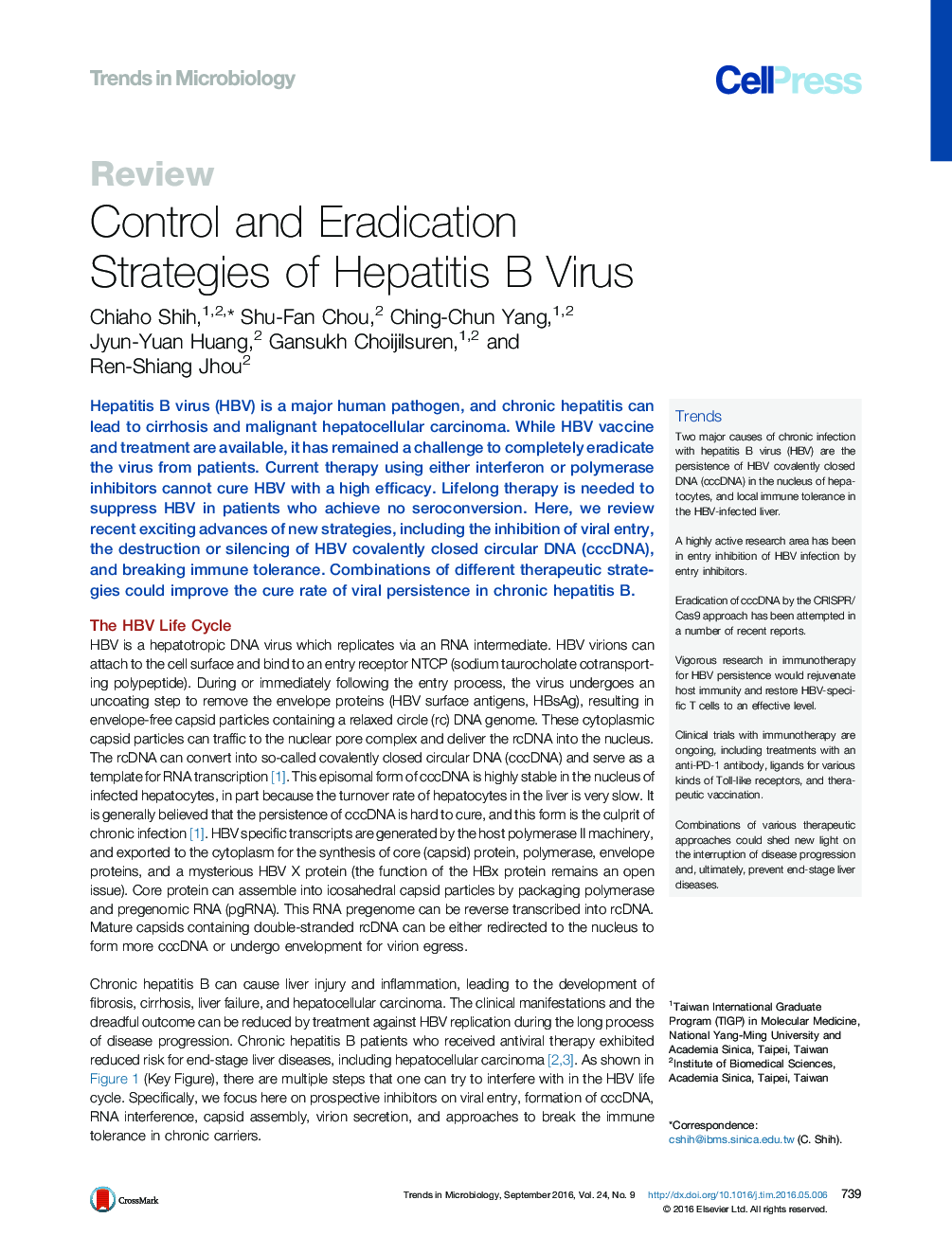| Article ID | Journal | Published Year | Pages | File Type |
|---|---|---|---|---|
| 3421695 | Trends in Microbiology | 2016 | 11 Pages |
Hepatitis B virus (HBV) is a major human pathogen, and chronic hepatitis can lead to cirrhosis and malignant hepatocellular carcinoma. While HBV vaccine and treatment are available, it has remained a challenge to completely eradicate the virus from patients. Current therapy using either interferon or polymerase inhibitors cannot cure HBV with a high efficacy. Lifelong therapy is needed to suppress HBV in patients who achieve no seroconversion. Here, we review recent exciting advances of new strategies, including the inhibition of viral entry, the destruction or silencing of HBV covalently closed circular DNA (cccDNA), and breaking immune tolerance. Combinations of different therapeutic strategies could improve the cure rate of viral persistence in chronic hepatitis B.
TrendsTwo major causes of chronic infection with hepatitis B virus (HBV) are the persistence of HBV covalently closed DNA (cccDNA) in the nucleus of hepatocytes, and local immune tolerance in the HBV-infected liver.A highly active research area has been in entry inhibition of HBV infection by entry inhibitors.Eradication of cccDNA by the CRISPR/Cas9 approach has been attempted in a number of recent reports.Vigorous research in immunotherapy for HBV persistence would rejuvenate host immunity and restore HBV-specific T cells to an effective level.Clinical trials with immunotherapy are ongoing, including treatments with an anti-PD-1 antibody, ligands for various kinds of Toll-like receptors, and therapeutic vaccination.Combinations of various therapeutic approaches could shed new light on the interruption of disease progression and, ultimately, prevent end-stage liver diseases.
